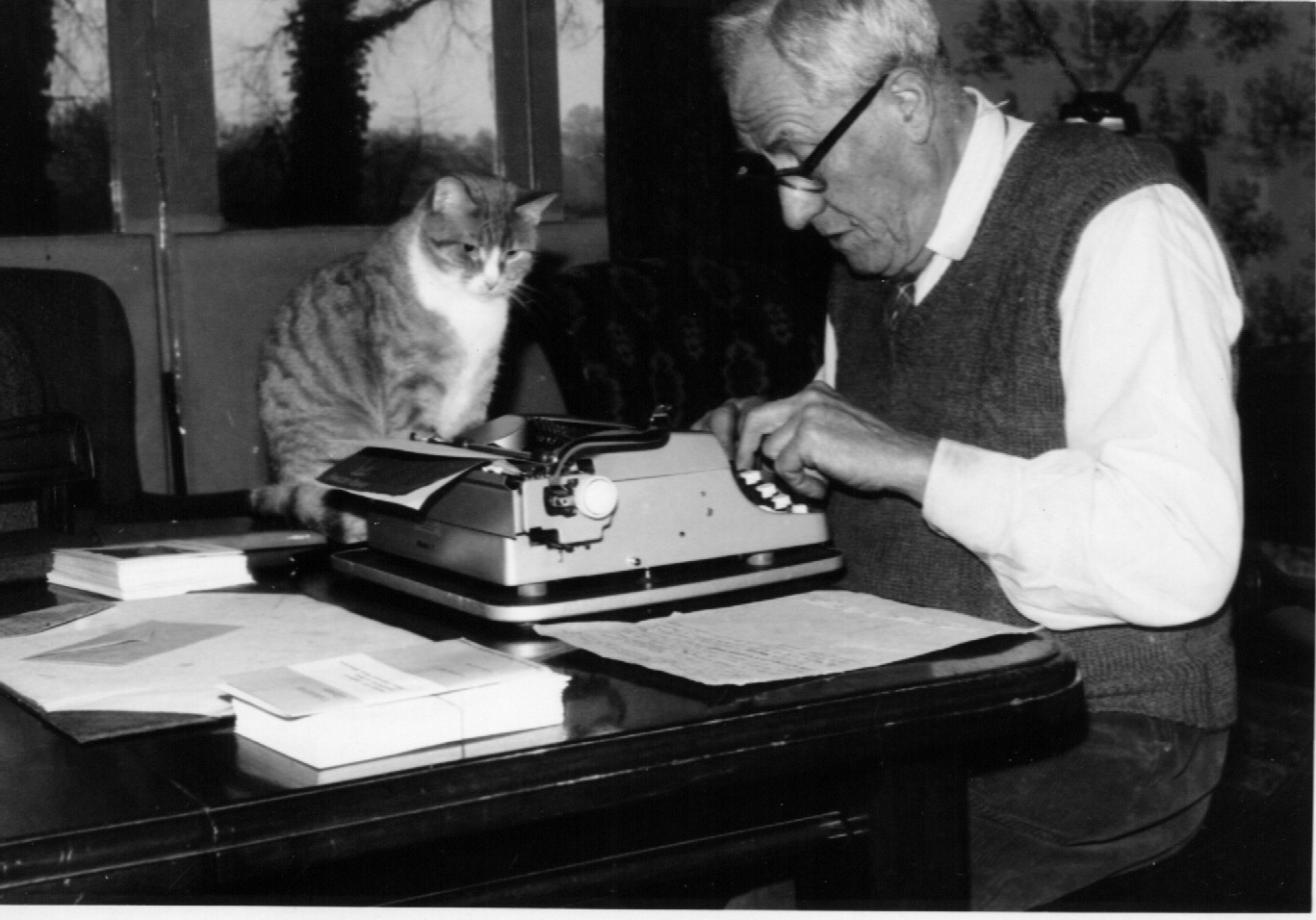Evelyn Jekyll Williams-Leir
1887 - 1976
E.J. grew up at Weston House, near Bath. An anecdote has his father at the dinner table pronouncing ".. and I say this without fear of contradiction.", at which point a 3 year old E.J. piped up with "I contradict you."
He worked as an engineer in a Napier factory producing aero engines for the Great War, and was proud of his design of a oil feed for lubricating part of an engine.
EJ married Laura "Ella" Orton (1884 - 1981) and had one son, Gilbert (George) Williams-Leir. The marriage lasted less than two years though there was no divorce.
Evelyn Jekyll Williams-Leir in 1947? 48?
E.J. and Margaret Shuffrey in a truck converted from a car, 1947
E.J. in beret at Riviera, Shiplake
E.J., GWL's wife Ruth Williams-Leir, and children in Rockcliffe park 1958? 59? Picture taken by GWL
 E.J. with a cat and a typewriter at Riviera, Shiplake
E.J. with a cat and a typewriter at Riviera, Shiplake
The Williams-Leir house in Weston, near Bath
The Weston estate, owned by the Macie family since the Reformation, came into the family when Thomas Leir IV's wife Mary Shore inherited it. When the estate was passed on to the next generation, it was divided: Thomas Leir V inherited Weston house, and his brothers inherited other parts of the estate. The house was passed down through the generations by means of an entail, specifying that it could not be sold without the agreement of two generations. The entail was satisfied and the house was sold in 1948 (to the Bath Football Club).
The house is mentioned in "The Lost World of James Smithson: Science, Revolution and the Birth of the ..." By Heather Ewing, Page 29
James Smithson's mother, the widowed Elizabeth Macie, aspired [..] the manor at Weston House, the [..] village of Weston, near Bath, where for generations Macies had been ...note 27
Photographs of Weston House taken prior to its 1970 demolition are at the National Monuments Record, BB74/5778-95. See also Joan Hargood-Ash, Looking back at Weston, (1964); John Collinson, The History and Antiquities of the County of Somerset (Bath, 1791), vol 1, pp.xxxix, 156-66.
The subject of this book:
In the mid-1830s, the United States learned that it was the beneficiary of a strange and unprecedented bequest. An Englishman named James Smithson, who had never set foot in the U.S., had left all his fortune to found in Washington "an establishment for the increase and diffusion of knowledge among men." He left no further instructions, and the questions surrounding the extraordinary bequest sparked a rancorous decade-long debate in Congress.
Read more of this fascinating book at Worldcat.
Smithson was actually a distant relative, as explained at Wikipedia and at Smithsonian.
George Williams-Leir (GWL, EJ's son) remembers
The mulberry tree was at the side of the orchard at Weston House, which our family held until 1948. It had fruit like large raspberries, but with a different flavour.
EJ planned to build a second house on the Weston estate, and designed an ingenious interlocking concrete brick for the purpose. Unfortunately the project was not completed.
In later life EJ moved to live in "Riviera", a house on the Thames at Shiplake (near Henley-on-Thames). Downstairs was the workshop with a metal lathe and drill press, and accommodation for a rowing skiff. This was a beauty: lapstrake construction, about 20 feet long with one sculling position central to the boat, and a wicker seat in the stern facing the person sculling (note: rowing is done with one oar held in both hands, in a vessel with at least two oars: sculling is done with a scull in each hand).
The living quarters were upstairs, with a balcony overlooking the river. The house was on the outside of a bend in the river so it was slowly eroding the bank near the house. As a result, the balcony was almost projecting over the river. The river would commonly flood in the spring, entering the lower floor, so it was appropriate to have the living quarters upstairs.